#Ski Patrol (1990)
Explore tagged Tumblr posts
Text
Episode 2 of “The 90’s: Week by Week” is now up on Podcast, Spotify, Audible and all other major audio streaming services! Join us as we take a look at the week of January 7 - January 13” in the year 1990.
Podcast: https://podcasts.apple.com/us/podcast/grubbys-private-bar/id1598471774?i=1000597996318
Audible: https://www.audible.com/pd/B0BTWCL14Z?source_code=ASSORAP0511160006&share_location=podcast_episode_detail
Spotify: https://open.spotify.com/episode/0EP6958F0J5wFlY9A8Y9ll?si=N21fhXSUQ4-ZFy5aPJhNpg&dd=1
#90's#nineties#90s#1990#January#nostalgia#a different world#the cosby show#cheers#phil collins#technotronic#teenage mutant ninja turtles#the simpsons#born on the fourth of july#driving miss daisy#ski patrol#skid row#Roseanne#indiana#Covington#hammond#chicago#pump up the jam#sleepover#slumber party#history#paula abdul#janet jackson
2 notes
·
View notes
Text
On December 1, 2016, Ski Patrol debuted on Polish television.

Here's a new portrait of George Lopez to celebrate!
#ski patrol#richard correll#george lopez#comedy movies#comedy film#1990s#90s movies#90s comedy movies#teen movies#exploitation film#grindhouse film#grindhouse#midnight movies#usa up all night#pen drawing#book art#poland#tv#art#movie art#drawing#movie history#pop art#modern art#pop surrealism#cult movies#portrait#cult film
0 notes
Text

Thomas Kent Carter (December 18, 1956) is an actor.
In films, he is known for his many comedic performances, such as the street-smart Chester in Seems Like Old Times and the karaoke-singing Iceman in Ski Patrol. He is known for playing slightly nervous characters, such as the rollerskating chef Nauls in The Thing, as well as the unfortunate National Guardsman, Cribbs, in Southern Comfort.
On TV, he is known for playing Michael “Mike” Fulton, an elementary schoolteacher, on Punky Brewster and Mylo Williams on Good Morning, Miss Bliss. He is known for playing the role of drug-addicted Gary McCullough in The Corner, a performance that The Boston Globe said: “perfectly captures the gentleness and passivity that can be addiction’s easiest conquest”. His first starring role on television was on Just Our Luck.
His acting debut was on an episode of Police Woman. He made appearances on Good Times, The Sinbad Show, The Steve Harvey Show, A Different World, and in the television films Polly and its 1990 sequel.
He grew up in the San Gabriel Valley area of Southern California. #africanhistory365 #africanexcellence
1 note
·
View note
Text
A closer look at the Avalanche Rescue Dog Program at Stevens Pass – KIRO 7 News Seattle
New Post has been published on https://petn.ws/JPWNb
A closer look at the Avalanche Rescue Dog Program at Stevens Pass – KIRO 7 News Seattle
The Avalanche Rescue Dog Program has been at Stevens Pass since the 1990s and is an essential piece of mountain operations at the ski resort. “We currently have five dogs that make up our program, one is actually retired now but she still comes to work,” Angela Seidling, the director of ski patrol at Stevens […]
See full article at https://petn.ws/JPWNb #DogNews
0 notes
Text
Helsingin Sanomat revisits the 'Tiitinen list,' a topic that has fascinated Finns for decades. The paper, citing its recent survey, says half of people in Finland want the list named after a former head of the Security Police, Seppo Tiitinen, to be published.
The so-called 'Tiitinen's list' has been a hugely controversial document for more than two and a half decades. The list contains 18 names of people in Helsinki whom the Stasi were interested in during the Cold War. It was presented to Finland by West German intelligence in 1990, and then-president Mauno Koivisto decided its contents should remain confidential. Over the years there have been sporadic attempts to open up the list to public scrutiny.
Interest in the list resurfaced in July, when Finns Party chair Riikka Purra, in the midst of her own scandal, called on the media to mount pressure for the list to be made public.
Interior Minister Mari Rantanen (Finns) has however said she can't influence the release of the list, as the authorities determine public access to sealed documents under the Act on the Openness of Government Activities.
Oulu's stolen bikes
Ilta-Sanomat reports on the BBC taking an interest in a group of Oulu residents trying to crack down on bike theft in the northern city.
'Bike Patrol' reported uncovering nearly 1,300 stolen bicycles, whereas the Oulu police did not want to tell the BBC how many stolen bikes they had found in the past year.
Ilkka Pulkkinen, who set up the 'Stolen Bikes, Oulu' Facebook group, told the British broadcaster that he receives 50-60 messages a day from bike owners. This means he often cycles around the city for up to five hours a day, logging hundreds of kilometres a week in search of stolen bicycles.
Summer-like September
On the weather front, it's an unsettled start to the week, but Maaseudun tulevaisuus says conditions will warm up by Wednesday.
By mid-week, skies in Finland will be mostly clear while temperatures in the south may reach 20 degrees Celsius.
On Wednesday, a high-pressure system will dominate the weather, meaning Finland can look forward to clear skies at least until the weekend, and possibly, even longer.
0 notes
Text
Weather cancels Moncton air show but plenty for military buffs
It was supposed to be a weekend of parachute jumps and aerobatics, but instead, it was three days of rain and cloudy skies in Moncton.
The Soldier On Air Display by the CF Snowbirds was grounded. So too was the SkyHawks Parachute Team.
Neither the SkyHawks or the Snowbirds got off the ground all weekend long.
The flight demonstration team needs a cloud ceiling of a minimum of 1,000 feet to perform their most basic air show and it was nowhere near that on Sunday.
Snowbirds Public Affairs Officer Cpt. Gabriel Ferris said it was disappointing not to be able to fly over Moncton this weekend.
"We were trying last year, we were trying the year before, so we were really hoping to be able to put on a display here in New Brunswick. It's disappointing, but there's not much we can do with the weather. Mother Nature decides and we just follow what she decides," said Ferris.
The SkyHawks were supposed to make a jump during the Three Fathers Memorial Run in Moncton's Riverfront Park.
SkyHawks Public Affairs Officer Lt. Rebecca Garand said the weather just didn't cooperate.
"We were expecting to jump for the whole weekend for multiple events and we tried so hard. Last time, we were just waiting by the plane to have it clear up because sometimes miracles happen, but it wasn't the case for us this weekend. We're really sad, but also safety is the number one issue for us," said Garand. "But we still came to the crowds and met people and signed some autographs and made the best of the time we were here."
Ferris said the snowbirds do have a maintenance day planned on Monday so it's possible a few of the jets may fly over the city, weather permitting.
While the cool, wet weather cancelled the air show, there was still a lot going on for military buffs.
The Canadian Armed Forces had armoured vehicles, jeeps, patrol cars, inflatable boats and weapons on display downtown.
The event was in support of Soldier On, a program that helps ill and injured veterans.
As expected, the display was a big hit with kids.
Canadian Forces Cpt. Adair Howe said kids want to know everything about the equipment.
"They want to know what the vehicle does, how fast it goes. They want to get in them, they want to play around in them and we want to make sure they know why we do it and have a fun time learning about it," said Howe.
Kids could also climb into a replica Spitfire fighter plane from the Second World War.
Flying Officer John Stewart Hart from Sackville, N.B., was the only Atlantic Canadian to fly a Spitfire during the Battle of Britain in 1940.
Air Show Atlantic executive director Colin Stephenson said they're always excited to bring the three-quarter scale model out to the public, which was built in 1990 for the 50th anniversary of the Battle of Britain.
"It's tremendous. It attracts so many people. It's travelling history is what it is. We put it in our trailer and we go to all three provinces around to different events and we're so proud to show it off and draw attention to our show. It's a promotional piece for the air show, but more importantly, to honour veterans because our Spitfire is actually named after a Canadian veteran," said Stephenson.
Stephenson said kids usually ask the same question.
"Is it real? I'd love to say yes, but it's just a really good model. They always say thank you," said Stephenson. "They're thrilled the controls work and the surfaces move, that it has sound to it. They're really excited to get in there."
Noah Alizadeh of Saint John said he's never seen anything like it before.
"It was fun, it was cool," said Noah.
The John S. Hart Spitfire will be on display at an airshow in Debert, N.S., on Aug. 26 and 27.
from CTV News - Atlantic https://ift.tt/uZd3Tbq
0 notes
Text

This photograph shows the 1990-91 Ski Patrol. 5th person from the left: Tony Dalton!
10 notes
·
View notes
Video
youtube
Leslie Jordan: I’m high on half an Ambien, look at my pretty stickers.
Me with my weird trivia brain: Not the first time you “took to many of these pills”, my good person.
youtube
#yeah that's the one thing I've seen him in#and yeah it's still in my head#because that's how my head works#leslie jordan#ski patrol#1990 movies were really something
10 notes
·
View notes
Text
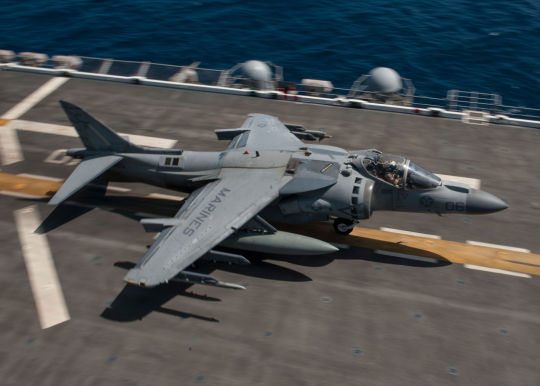
-An AV-8B from VMA-163 takes-off from USS Makin Island (LHD-8). | Photo: National Museum of the U.S. Navy
Flightline: 70 - McDonnell Douglas/BAe AV-8B Harrier II
The AV-8A was operated by the USMC beginning in 1971, but the Marines quickly found that the Harrier was less powerful than hoped, only capable (with a standar takeoff, no less) of carrying a smaller payload than an A-4 over a shorter range. In 1973, a joint US/UK team began work on a project to develop a new Harrier, powered by a redesigned Pegasus 15 engine. This aircraft, dubbed the AV-16, would have double the AV-8A’s range and payload, and would replace the Harrier GR.1/3 in RAF service and the AV-8A and A-4 Skyhawk in USMC roles. The UK pulled out of the project in 1975, owing to rising costs and decreased defense spending, and the US, unwilling to foot the costs alone, canceled the program. McDonnell Douglas and Hawker Siddeley continued work on upgrading the Harrier, and in 1976 began modifying two AV-8As with new wings, revised intakes and nozzles, and other aerodynamic changes. These mules were designated YAV-8B.

-One of two AV-8As being modified into YAV-8Bs. | Photo: U.S. Navy Naval Aviation News
The results showed greater than expected drag, but positive test results in other areas, including payload, range, and V/STOL performance, led to the award of a development contract in 1979. In 1981 BAe (formed by the nationalization and merger of British Aircraft Corporation, Hawker Siddeley Aviation, Hawker Siddeley Dynamics and Scottish Aviation) rejoined the program in 1981, enticed by the more affordable path McDonnell Douglas was forging. The MoU stipulated a 60/40 split between the US and UK companies, with airframe production taking place at McDonnell Douglas’ facilities in suburban St. Louis, Missouri, and BAe’s Kingston and Dunsfold facilities, and engine production split 75/25 between Rolls-Royce (which had previously absorbed Bristol Siddeley) and P&W.

-Illustration: McDonnell Douglas
The AV-8B Harrier II was extensively redesigned from the AV-8A, with the forward fuselage extended and the cockpit raised by ten inches, providing better pilot visibility. To compensate for these changes, the rear fuselage was lengthened by a foot and a half, and a taller tail, based on that used on the Sea Harrier, was fitted. The biggest change was the new supercritical wing, which was larger than the one used on previous models (the outriggers on the AV-8B are in the same place as on the AV-8A/GR.1/3, giving a sense of scale), and had a higher aspect ratio and decreased sweep. The new wing also had leading edge extensions, all of which grants the Harrier II a 6,700lb increase in payload with a 1,000' takeoff roll. The AV-8B was the first combat aircraft to feature carbon fiber composites in its construction, with the wing and forward fuselage being almost exclusively carbon/epoxy construction, leading to the Harrier II being almost five hundred pounds lighter than if it had been constructed from metals alone.

-An AV-8B from VMA-331 in 1991 during Operation DESERT STORM. The squadron eventually dropped 256 tons of ordinance during the war and became the first attack squadron to operate from an amphibious assault ship. | Photo: U.S. Navy National Museum of Naval Aviation
The AV-8B completed operational evaluation (OPEVAL) in 1985, and entered service with the USMC starting with USMC squadron VMA-331 (“Bumblebees”). In 1990 Marine Harrier IIs were deployed to the Persian Gulf on the amphibious assault ships USS Nassau and Tarawa as part of Operation DESERT SHIELD, flying training and support sorties. Despite plans to hold the AV-8B in reserve during the initial phases of DESERT STORM, Harriers were pressed into service on 17 January in response to a call for close air support from an USMC OV-10 Bronco against Iraqi artillery positions. The next day, AV-8s began strike missions against Iraqi targets in southern Kuwait. During Operations DESERT SHIELD and DESERT STORM, 86 AV-8Bs amassed 3,380 flights and about 4,100 flight hours, with a mission availability rate of over 90 percent. Five AV-8Bs were lost to enemy surface-to-air missiles, and two USMC pilots were killed. After the end of the war, Norman Schwarzkopf included the AV-8 along with the F-117 and AH-64 in his list of weapons that played crucial roles in the campaign. Marine Harriers remained in the Gulf region during Operation SOUTHERN WATCH from 1992 to 2003, operating from ‘phibs in the Gulf and from forward operating bases such as Ali Al Salem Air Base, Kuwait. Marine Corps Harrier IIs were later flown during Operation ALLIED FORCE over Yugoslavia, ENDURING FREEDOM in Afghanistan, and the 2003 Iraq war.

-An AV-8B Harrier aircraft hovers above the flight deck of the amphibious assault ship USS Bataan (LHD 5) as the pilot makes a vertical landing. The Bataan was dubbed “Harrier Carrier” during Operation Iraqi Freedom. | Photo: Photographer’s Mate 3rd Class Jonathan Carmichael - USN
Two major variants of the AV-8B were produced: the Night Attack Harrier and the Harrier II Plus. First fielded in 1991, the Night Attack Harrier featured a FLIR camera on the nose cone, a wide-angle HUD, provisions for NVGs and a digital moving map. The Night Attack Harriers are powered by a Pegasus 11-61 (aka the F402-RR-408), which produce 23,000lbf of thrust. The Harrier II+ is also powered by the -408, and is fitted with a APG-65 multi-mode pulse-Doppler radar, taken from early model F/A-18s during their own upgrades to APG-73 radar. This allowed Harrier II+ to carry AIM-120 AMRAAM, as well as AGM-65 Maverick and AGM-84 Harpoon missiles, though the angle-rate bombing system was removed. Upgraded AV-8Bs are also capable of carrying a LITENING targeting pod, allowing the employment of PGMs.

-An AV-8B Night Attack Harrier, showing the FLIR camera mount on the nose. | Photo: Dick Wels
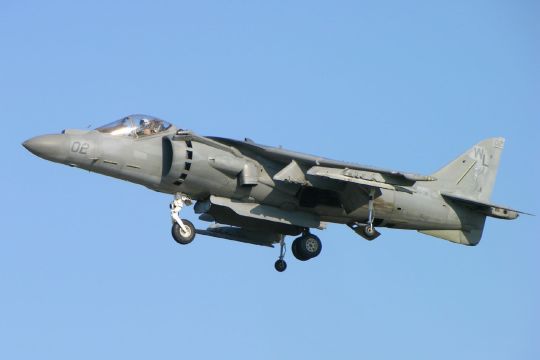
-An AV-8B Harrier II+ hovering. | Photo: D. Miller
The Italian Navy ordered two TAV-8B trainers, followed by a further order of 16 AV-8B+ to operated from the carriers Andrea Doria and Giuseppe Garibaldi. Italian Harriers were part of the nation’s commitment to the NATO campaign over Kosovo, dropping conventional and LGBs. An additional 7 aircraft were ordered in the early 200s to serve on the new carrier Cavour, with existing aircraft also upgraded to carry AIM-120s and JDAM guided bombs. Italy has ordered a force of 15 F-35B Lightning IIs to replace its Harriers.
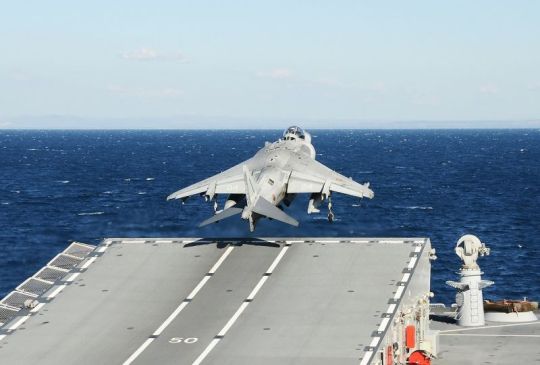
-An Italian AV-8B+ launching from the carrier Cavour’s ski jump. | Photo: Aldo Bidini
Already an operator of AV-8A Matadors, the Spanish Navy was the first international operator of the AV-8B Harrier II, ordering 12 of its own variants, known as the VA-2 Matador II. The Matadors operated from Príncipe de Asturias beginning in 1989. In 1993, an additional eight VA-2+ (the equivalent of the AV-8B+) were ordered, along with a TAV-8B trainer. In 2000, Boeing (which had absorbed McDonnell Douglas) signed a contract to upgrade a number of early model VA-2s (the number varies from 2-11) to Harrier Plus standards, allowing them to carry AIM-120 missiles. Due to budget constraints, only five of the original Matador IIs were upgraded. The Matadors were part of Spain’s commitment to Operation DENY FLIGHT, enforcing the UN’s no-fly zone over Bosnia and Herzegovina. After the Asturias was decommissioned in 2013, the Matador IIs operate from the amphibious assault ship Juan Carlos I. Spain was interested in replacing the VA-2s with F-35Bs, but has instead settled on extending the Matador’s service life, citing the cost of replacements.

-A Matador II+ over RIAT in 2019. | Photo: Airwolfhound
The first RAF Harrier II, known as the GR.5, entered service in 1987, replacing earlier GR.1 and GR.3 variants. The GR.5 differed from the AV-8B in that it had stainless steel leading edges to meet RAF bird-strike requirements, as well as in avionics and weapons. The RAF’s GR.5s were considered too immature a system to be deployed for the 1991 Gulf War, though several were dispatched to patrol the no-fly zones in 1993. Beginning in 1990 BAe began testing an upgraded Harrier II GR.7, which was broadly similar to the Night Attack AV-8B. After a successful test program 34 GR.7 were delivered through 1991, with the existing GR.5s upgraded beginning the same year. The GR.7s, hastily modified with GPS navigation, were deployed with NATO forced to the former Yugoslavia, and carried out recon and strike missions, often dropping LGBs on targets designated by SEPECAT Jaguars. Later, GR.7s were part of the UK’s commitment to the wars in Afghanistan and Iraq. Beginning in the middle 2000s, BAe began development of the GR.9 upgrade, which would improve communications, ground proximity warning and navigation systems, followed by the integration of the AGM-65 Maverick air-to-ground missile. The GR.9 upgrade also included replacement of fatigued airframe components. GR.9s were deployed to Afghanistan in 2007, allowing aged GR.7s to be withdrawn. The stresses of war and advancing age of the fleet caused the wholesale retirement of the RAF’s Harrier IIs in 2011, with their tasks being assigned to Tornado GR.4s until delivery of the F-35B Lightning.

-A Royal Air Force Harrier GR.9 conducts a combat patrol over Afghanistan, equipped with a laser-designator pod and armed with Paveway guided bombs. | Photo: USAF
#aircraft#aviation#avgeek#cold war#airplanes#airplane#cold war history#coldwar#aviation history#mcdonnell douglas#bae#british aerospace#AV-8B#av 8b#av8b#gr7#gr9#harrier gr7#harrier gr9#usmc#raf#rn#royal air force#royal navy
24 notes
·
View notes
Photo

#NowWatching Ski Patrol (1990) https://www.instagram.com/p/CnrjVk4OxM9/?igshid=NGJjMDIxMWI=
0 notes
Text
On January 12, 1990, Ski Patrol debuted in the United States.

0 notes
Text
Nicaragua in ‘undeclared state of siege’ as hooded gunmen rule the streets
By Tim Johnson, McClatchy, July 26, 2018
MANAGUA, NICARAGUA--They ride in the back of Toyota double-cabin pickup trucks, assault rifles slung over their shoulders. No one knows their identities. They always wear black ski masks or hoods.
The gunmen--between 1,000 and 1,500 of them, according to some estimates--are part of a recently formed paramilitary force protecting the continued rule of President Daniel Ortega against a three-month-old civilian uprising. Their main tactic is terror. They conduct roundups, fire at protesters, carry out dark-of-night raids and menace the population.
The Pro-Human Rights Association of Nicaragua said Thursday that paramilitary forces have conducted 595 “kidnappings” and disappearances of citizens since the uprising began April 18. The group said it has tallied 97 killings since July 11.
“Today in Nicaragua, there exists an undeclared state of siege,” Alvaro Leiva, executive director of the rights group, said at a news conference.
Police statements make no mention of hooded gunmen when describing deaths, such as that of Brazilian medical student Raynéia Lima, who was shot and killed Monday night in Managua. Police said a private security guard shot the 31-year-old. But they have made no arrests, and her vehicle has vanished. Brazil lodged a diplomatic protest.
In some ways, the paramilitary forces have achieved their objective. Almost none of the scores of massive roadblocks that paralyzed the country from the uprising’s onset in April remain. In public statements, Ortega sounds upbeat, claiming that the country is returning to normal.
“It’s been a week now that turmoil has stopped,” Ortega told Fox News on Monday.
While Ortega may feel he’s gaining the upper hand, his opponents say he’s taken Nicaragua on a dark path. Tourist arrivals have plunged, and 800 of the nation’s 2,500 restaurants are dark. Jittery Nicaraguans have yanked some $715 million from banks since the beginning of April.
“People go home at 5 or 6 and they don’t leave at night out of fear,” said Lucy Valenti,president of the Nicaraguan National Chamber of Tourism, a trade group.
Ortega denies that he had anything to do with creating the informal militias that continue to patrol city and country roads, though less visibly than week or two ago. But the fiction is blatant. Television broadcasts from July 14 show the 72-year-old revolutionary-turned-autocrat embracing hooded gunmen after they dislodged protesters in Masaya, where opponents of Ortega had turned the city into a citadel against his rule.
“They can detain people on the highway. They can search vehicles, ask for papers, search cellphones,” said Sergio Ramirez, an acclaimed writer who served as Ortega’s vice president from 1985 to 1990 but is now a bitter critic. “You can turn up tortured on the side of the road or jailed in El Chipote,” a notorious prison.
Uniformed police often accompany the paramilitary forces but it is the militias who are better armed. They carry high-caliber rifles, including ones with telescopic sights. One was photographed with a rocket-propelled grenade.
“They don’t answer to anyone,” Ramirez said. “It is as if in the United States the Ku Klux Klan would appear carrying weapons and doing roundups, and the police were protecting the actions of the Ku Klux Klan.”
Leaders of an opposition alliance seeking Ortega’s removal before his term ends in 2021 have pledged to use nonviolent means, but the fierce crackdown may imperil that objective.
“The more time that passes, the more desire people have to defend themselves,” said Fidel Moreira Flores, leader of the Center for Governance and Democracy Studies, a non-governmental organization with offices in Nicaragua. He said young people are restive. “They are shouting: Look for weapons so we can defend ourselves.”
Those who look down the road say they fear the paramilitary units eventually will turn to open criminality, making Nicaragua look more like its violence-wracked neighbors to the north: Honduras, El Salvador and Guatemala.
“You create them but you don’t control them. They have their own social dynamic. They are starting to rob on the streets,” said Óscar René Vargas, a sociologist.
Armed groups aren’t Ortega’s only tool to combat his opponents. The Sandinista Front-controlled National Assembly on July 16 approved a sweeping antiterror law that allows the state to prosecute anyone who causes death or injuries or destroys public or private property.
The loose wording lets the government interpret the law to go after “people who are simply exercising their right to protest,” Rupert Colville, spokesman for the United Nations High Commissioner for Human Rights, told a U.N. news service.
But Nicaraguans are not prone to bottling up their feelings, and even as ordinary citizens hunker down in fear they have made life difficult for officials who venture into public.
“You see now that the principal Sandinista officials can’t go to the supermarket. They board airplanes and people start shouting at them, ‘murderers,’” said José Adán Aguerri, president of Nicaragua’s largest business and agricultural group, the Superior Council of Private Enterprise.
3 notes
·
View notes
Text
A view from the A270
Seeking refuge along the Lewes Road in Brighton & Hove’s forgotten suburbs
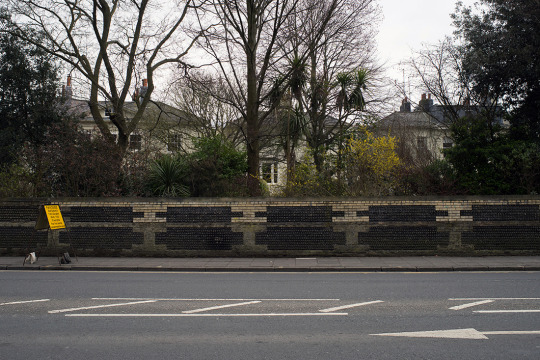
At its source, the A270 divides the affluent Hanover area with its crescents, private roads and estate agents from ‘The Level’, the preferred daytime refuge for many of the city’s heterogenous groups. The socio-economic divide that plagues Brighton & Hove is encapsulated topographically here. This series of photos explores the in-between spaces or heterotopia that mark the arterial drag that is the Lewes Road. I wondered what spaces of refuge or evidence of local community exist along the way? As a former Sussex postgrad (MA Digital Documentary) I rarely ventured beyond the Falmer campus, instead heading in the opposite direction towards home in Kent. Nevertheless, the Lewes Road area is home to a sizeable proportion of Brighton & Hove’s student population. Many of my fellow students lived here but have since moved on.

Unusually, the A270 begins as two separate one-way streets, a fork created by ‘The Level’ which merges into two-way traffic at the Vogue gyratory. Named after the former Vogue Cinema which was replaced by a Sainsbury’s supermarket in 1985, the Vogue was an X-rated film and strip club in the 1970s. Even today, iconic Brighton & Hove landmarks such as the pier, the Royal Pavilion, The Dome, Victoria Gardens couldn’t seem further away amidst the endless commuter traffic of the gyratory. The A270 then snakes its way north-eastwards to the neighbouring town of Lewes via the sprawling suburbs of Bevendean, Moulescoomb, Coldean and the Falmer campuses of Brighton and Sussex universities.

This series of 27 sequential images therefore reflects the A270 that inspired them; images are displayed as they were captured one afternoon on Easter Saturday. Most students had gone home for the weekend and ‘the Albion’ were at home to Leicester City. Apart from the odd pedestrian, the streets were mostly deserted. This helped me avoid reproducing unhelpful social stereotypes of hooded youths, gangs and ‘asbos’ that arguably occupy the social imaginary of the area. One of the problems with bearing witness to a socially deprived area through the photograph is sensationalising its aesthetic of decay. I sought to subjectively frame details which interested me; lines, perspectives, disparate features that are subversively characterful. Much of Brighton centre has become ‘hipsterfied’ or 'studentified', sterilised by modern developments and commercial property. Instead, the spaces depicted herein seem to intrinsically counter that narrative. I sought therefore not to sensationalise or romanticise a downtrodden area but where possible, to create or restore former spaces of refuge or 'heterotopia' within the images themselves.
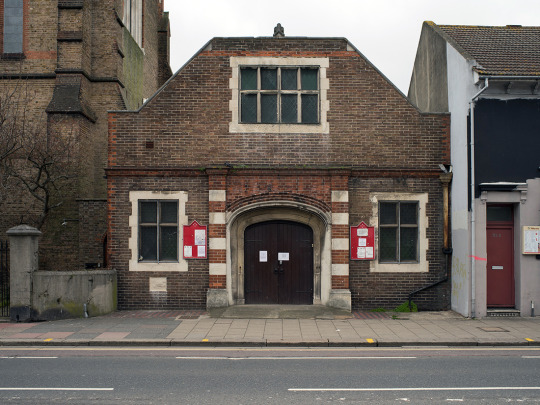
This is Wagner Memorial Hall named after Rev Arthur Wagner who commissioned the construction of adjacent St Bartholomew’s Church. This upset locals who complained that the excessive height of the building (as the tallest church in Britain) stopped their chimneys from drawing properly. Wagner bought all 400 neighbouring houses and subsequently reduced the rents.

The Extra Mural Cemetery next to Woodvale Crematorium is a sheltered, gently sloping, well wooded area of down land between two much steeper hills.... a good place for a walk.


The Bernard Oppenheimer Diamond Works was a diamond polishing factory built 100 years ago. It provided work and refuge for the majority of Brighton & Hove’s disabled war heroes, some of whom were amputees needing specialist treatment. Now the Big Yellow Self Storage, popular with local students often leaving for the summer before returning and renting different rooms.
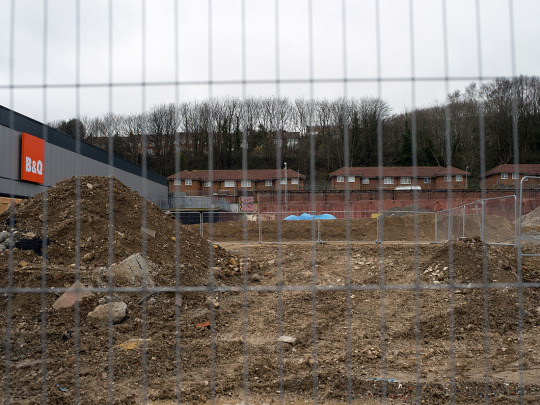
The site of the former Preston Barracks which were builtin 1793 to sustain potential Napoleonic invasion after the French revolution. They were demolished in the 1990s and the site is now a University of Brighton student housing development.

Like the nearby more modern St. George’s hall in Moulsecoomb, halls like this one build in 1949 which were once community meeting grounds are now often left empty with staff blaming changing demographics in the community.

Behind this junction at the end of Queensdown Rd is Homewood College, a community special school. Accessible only by foot from Moulsecoomb Station are Brighton & Hove Pupil Referral Unit and Cedar Centre Special School. The absence of these schools in image was both an aesthetic and political decision, reflecting on the otherwise hidden nature of their geographical location.
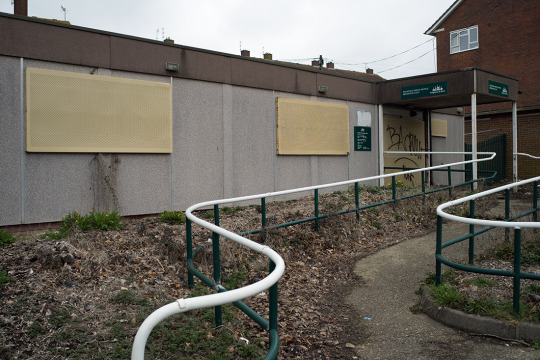
Since the mid-eighties, the twin phenomena of the Right to Buy scheme and the 1992 Universities Act have had the dual effect of displacing once established communities in these post-war housing estates as many residents have cashed-in and moved out creating increasing numbers of tenanted HMOs (houses of multiple occupancy) to cater for the increased influx of students from University of Brighton. Situated on Bates Estate noted for its high incidents of report crime, this housing office closed down in March 2014 due to a decline in the number of people using the office. Local residents have rejected plans for a new block of flats on the site. This is in spite of a similar development in neighbouring Whitehawk on the site of the old housing office. The scheme is known as New Homes for Neighbourhoods and is intended to provide much-needed affordable housing. Council bosses hope that a new block of flats could help lead to the regeneration of one of Brighton’s ‘most notorious estates’.
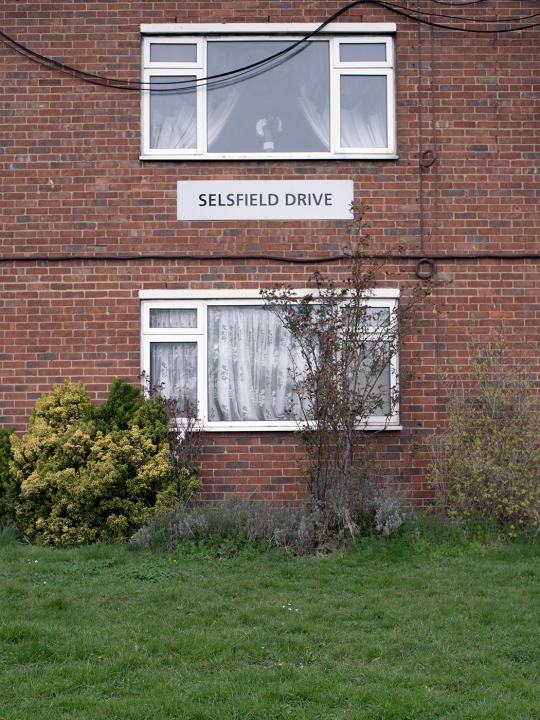
The Moulsecoomb scheme was in the form of a garden city with winding roads, large grass verges, and big gardens. It was intended to house veterans of the Great War; there were even tennis-courts provided in The Avenue. In South Moulsecoomb, the earliest buildings were effectively an adjunct to the existing housing opposite Preston barracks, but the later extensions of North and then East Moulsecoomb took the estate out into relatively remote countryside. The 478 houses were meant to provide new homes for people in the proposed slum clearance areas on Albion Hill, but the rents charged by the council were prohibitive for most of the intended residents, and tenants were brought in from other towns, especially London, following an advertising campaign. Little was therefore done to relieve the appalling conditions in central Brighton.

The mainline rail track between Falmer and Moulsecoomb stations running adjacent to these dilapidated garages separates the Bates Estate from the Home Farm Business Centre, home to American military weapons manufacturer EDO MBM Technology Ltd/Harris. The UK firm makes the EDO MBM Zero Retention Force Arming Unit, an electro mechanical device used on military aircraft bomb racks to arm munitions as they are released from the aircraft. The headquarters has been the target of multiple instances of anti-war activism.


Anyone coming down Lewes Road from Falmer can’t miss Rory’s Hand Car Wash which backs on to Wild Park. Near the back of the park is what's known locally as the "ski slope" which rises to the Hollingbury Fort and gives views across the city. Wild Park will always be synonymous with the ‘Babes in the Wood’ murders in 1986 which remain unsolved.

The Stringers have the monopoly of funeral services in the Lewes Road area and have been a staple of the community from Moulsecoomb down to the Level for decades, if not centuries.

This phone box appears like a grotesque tardis to some lost past. This one interestingly without a door, as if it would be too tempting a prospect for ‘scoombers’ to make varied use of a phone box with a door... city planning at its finest.
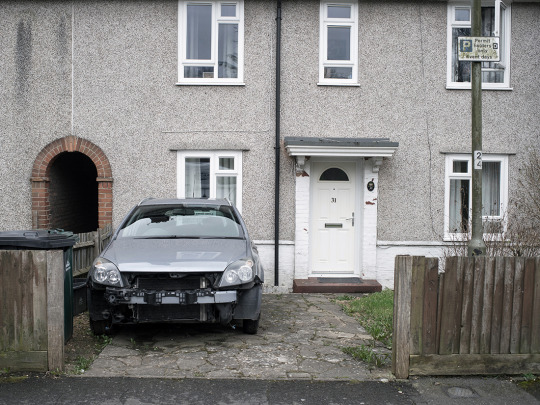
As well as housing students in HMOs, Barcombe Road is home to some local families, whose kids patrol on bikes haranging visitors to take pictures of them.




The entrance to 'The Keep', the East Sussex Record Office. A heterotopia of time... '...an unrivalled, detailed record of the region’s history, dating back over 900 years. These archives document the lives of individuals, places and events from across the county and beyond, and they include written records, maps and plans, prints and drawings, photographs and films, oral histories, and digital and electronic records.' (Source - thekeep.info)

The Keep serves as an artificial and psychological barrier between the Moulescoomb estates and the universities.
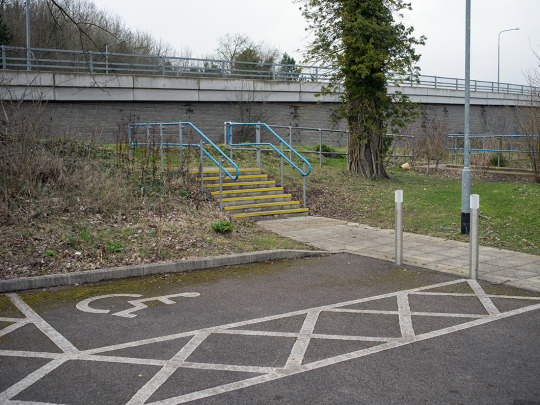


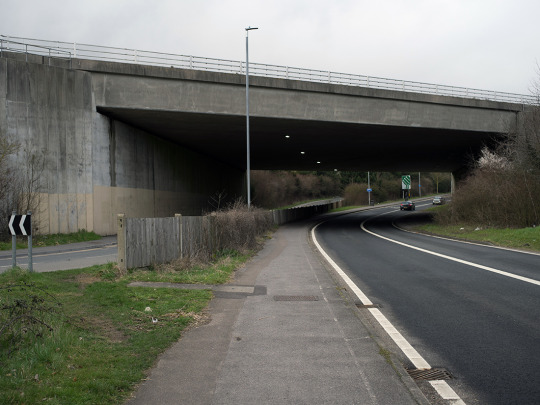
The end of Moulescoomb and the continuation of the A270 under the flyover. The next stop is HMP Lewes, home to many of Moulescoomb and Bevendean's convicted criminals.
#heterotopia#travelogue#journey#spatialinjustice#spatialjustice#lewes#brighton#photography#photographer on tumblr#social landscape#social documentary#estates#britain#england#psychogeography#derive#architecture#bland#urbex#urbandecay#urbanexploration#urbanphotography#urban#suburbia#subtopia#city planning#social housing#social horror#social history#weaponized
3 notes
·
View notes
Text
September 25, 2020

Photo: Morning frost on campus.
This week marked the first full week of classes in our fall term, as well as the first weekend filled with outdoor adventures and fun activities. Our students and teachers made good use of a variety of different outdoor campus spaces for their lessons, with classes taking place high atop viewpoints, around our woods and trails, and in our garden and farm spaces. Though we are not straying far from campus for outdoor trips this fall, there were no shortage of exciting options for our students to participate in this past weekend. Saturday saw groups of students paddling around Round Lake, learning tricks in our newly constructed skatepark, and hiking to nearby Balanced Rocks—a longtime favorite of North Country School students and Camp Treetops campers. Fall colors are nearing their spectacular peak in our surrounding Adirondack Park, and each day we make sure to take some time to pause and simply appreciate the view.
Note: This week we returned to our standard #ThisWeekAtNCS format of highlighting each of our four signature program areas—place-based academics, the visual and performing arts, our outdoor program, and our farm and garden—in these campus updates. Check in each week to see how our students are learning, growing, and exploring in all of these areas of the North Country School program.
ACADEMICS


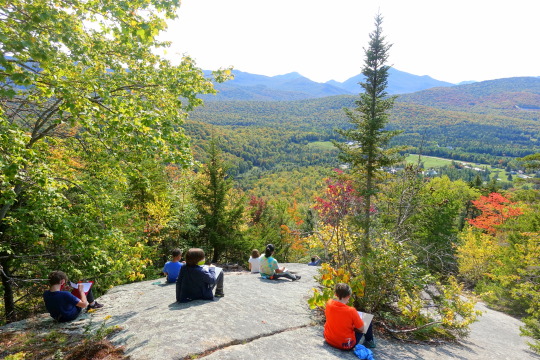
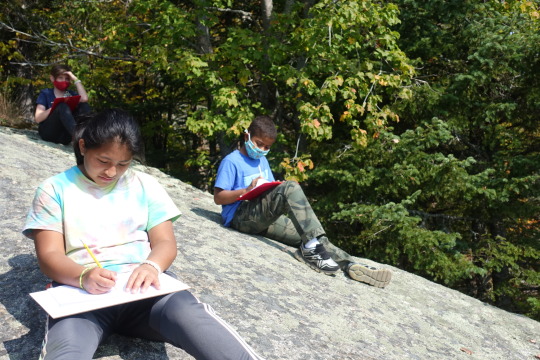
Top: Max teaches science class on the Trouble lookout. Middle 1: Anika does science work on Trouble. Middle 2: 5th- and 6th-grade science class on Trouble. Bottom: River, Matt, and Ani write their scientific observations.
This week provided the perfect autumn backdrop for outdoor classes, with our youngest students taking full advantage of our mountain campus to practice their skills of scientific observation and identification. In Max’s 5th- and 6th-grade science class, students took a hike up to Trouble—a sprawling view of the North Country School campus and High Peak mountains—for a lesson on sensory observation. Students in the class took notes on the many sights around them, from large to small, before sharing some of their observations with their classmates. The group also discussed how our brains store information, constantly sorting through and weeding out data in order to shape our perceptions of the world around us.
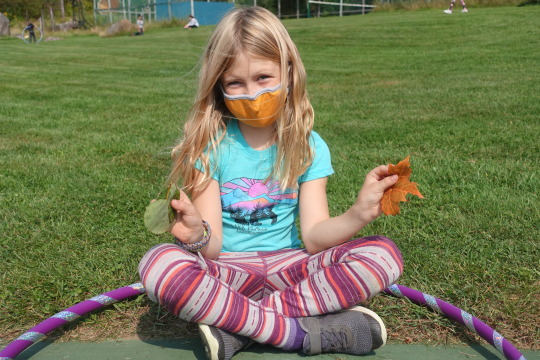


Top: Julia and her leaves for science class. Middle: Alea selects leaves. Bottom: A leaf rubbing.
While their older peers made scientific observations from the top of Trouble, our 4th-grade scientists began studying the forest around the Upper Field for their unit on tree identification. Each student in Elie’s science class selected five unique leaves from the trees around them. They then made leaf rubbings in their science journals using crayon and colored pencil, before examining and writing about the different leaf shapes, margins, and venation (veining patterns) they observed in their leaf samples.
ARTS



Top: Courtney’s class plays an improv game. Middle: Abigail creates a weaving pattern. Bottom: The colorful weaving supply shelf.
At North Country School, our core value of “art everyday” can take many forms, and this week our students explored their creative voices and vision through a wide array of mediums. In Courtney’s improv class, students played a mix of improv games that will help them hone their skills of reacting quickly and working together as a group. Down in the fiber arts studio, students began designing original patterns that they will follow as they weave colorful tapestries and belts.
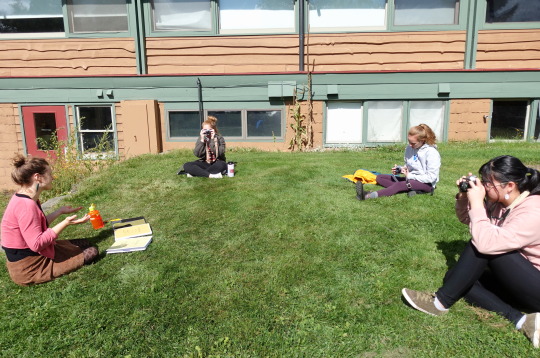


Top: Sierra teaches a photo class outside. Middle: Grace learns about her film camera. Bottom: Colton takes digital landscape photos.
Students interested in photography at North Country School have the opportunity to experiment with both digital and film cameras, and to edit their projects both in our digital photo lab and in our darkroom. This week, photography teacher Sierra worked with our 8th- and 9th-grade photography students, explaining the mechanics of their different cameras and guiding them on photo walks around campus. Students including Grace and Colton were able to explore and capture beautiful images of the garden, Round Lake, and our surrounding mountainscape as summer turns to fall all around us.
OUTDOORS


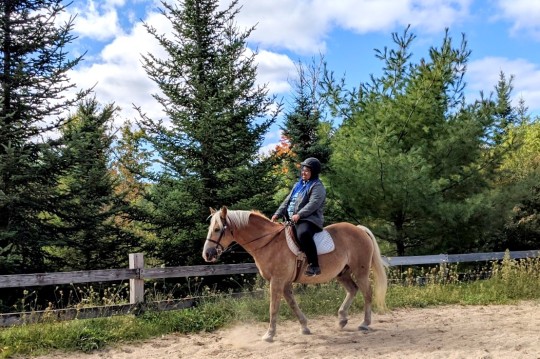


Top: A Saturday trip to Balanced Rocks. Middle 1: Eliza jumps between the rocks at Balanced Rocks. Middle 2: Azalech rides a horse. Middle 3: Canoeing on Round Lake. Bottom: Alejandro skateboards at the skatepark.
This past weekend marked the first official weekend trips of the year, and though we are not straying too far from the North Country School campus this fall, there are no shortage of spectacular sights and fun adventures to be had within our own spot in the Adirondack Park. This Saturday saw one group of students hiking up to nearby Balanced Rocks to take in the sprawling views of campus and the surrounding mountains. The group then followed in the footsteps of so many before them by jumping between the towering “balanced rocks” that give the vista its name. Back on campus, other groups spent time in the riding ring practicing their equestrian skills, paddling around Round Lake in canoes, and heading over to the newly-constructed skatepark to work on their jumps and tricks.
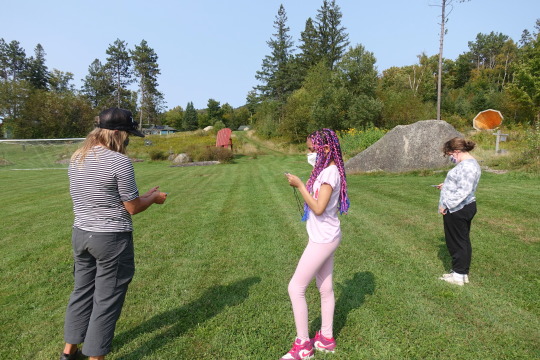


Top: Jess J. teaches Outdoor Leadership class. Middle: Inyene reads a compass. Bottom: JT and Jess J. use compasses to navigate through the Upper Field.
This fall we are excited to be offering a new Outdoor Leadership class to our 8th-grade students, led by one of our nurses and lifelong outdoor adventurer Jess Jeffery. This week Jess, who also has a background as a wilderness caretaker and ski patroller, led the class through some of the foundations of wilderness safety and navigation. The group, which includes students Olivia, Inyene, JT, and Landon, learned the basics of reading a compass and using maps, before creating their own navigation courses through campus. The group then led and instructed some of their peers through the courses they’d created.
FARM AND GARDEN
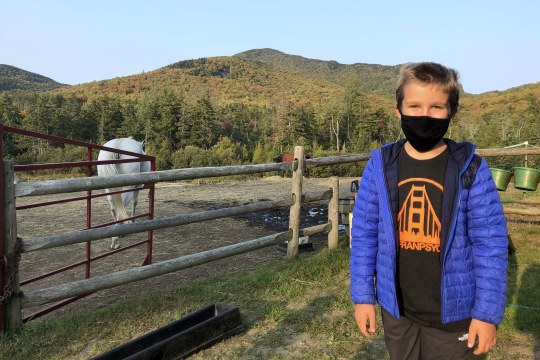
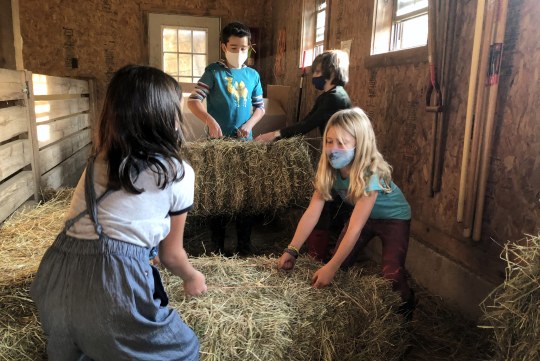
Top: Monty at barn chores. Bottom: Lucy, Julia, Duncan, and Julian give the sheep hay during barn chores.
At North Country School, caring for our barnyard creatures, and understanding how those creatures provide for us in turn, has been an integral part of our value system since we were founded in the 1930s. Each day our students work together to ensure that our farm animals are safe, happy, and healthy. This week our youngest students participated in their first weekly chore rotation down at the barn, working alongside Barn Manager Erica and our farm interns to learn how to collect eggs in the chicken coop, top off water and grain troughs in our sheep and goat barn, put out hay bales on the horse pasture, and muck out animal spaces.




Top: 7th-grade Edible Schoolyard class meets in the Children’s Garden. Middle 1: The farmers talk about our pigs. Middle 2: The pigs in Dexter Pasture. Bottom: Brian in front of the pig enclosure.
When Alice Waters, a founder of the farm-to-classroom movement, created the Edible Schoolyard Project in Berkeley, California, in the 1990s, she selected North Country School and Camp Treetops as one of the six founding members of the organization, calling NCS/CTT “the pioneer of edible education.” Today, just as in our earliest years, we continue to believe in the importance of connecting children to the natural world, to the food systems that provide us with sustenance, and to the life cycles involved in those systems. Our own Edible Schoolyard (ESY) classes, offered weekly to our entire student body, strive to provide our students with the foundational knowledge to make healthy food choices for themselves, their communities, and the environment.
This past week our 7th-grade Edible Schoolyard students met up in the Children’s Garden to share some thoughts on their own food choices and preferences, before heading over to visit and learn about our herd of pigs. ESY teacher Elie, along with Barn Manager Erica and our farm interns, talked about how and why we choose to raise pigs for meat, and about the importance of considering what it means to raise meat animals ethically. The class also discussed the many different factors involved in making personal food choices. Erica and Elie explained how our pigs have been cared for, and how we value and appreciate their role in keeping us fed and healthy. While discussing raising animals for meat can be challenging, these conversations serve important reminders about the many factors involved in getting food to our plates each and every day.
Check back next week to see what we’re up to on our mountain campus.
For more information about the #ThisWeekAtNCS blog, contact Becca Miller at [email protected].
For general school information, call 518-523-9329 or visit our website:
www.northcountryschool.org
0 notes
Text
Jorge Lopez

Born April 23, 1961 in Mission Hills California
Actor, Stand up Comedian, and Producer
Career:
Jorge Lopez used his painful childhood memories for joke punchlines.
Stand up Career in 1980′s
Comedy Central, Arsenio Hall Show
Acting Career in 1990′s
Ski Patrol, Fatal Instinct
First Comedy Album: Alien Nation
TV Shows in 200′s
In 2002, Lopez became one of the few Latinos to star in a television comedy series, following in the footsteps of Freddie Prinze and Desi Arnaz.
2002 - 2007
Comedy Specials
Second Comedy Album: Right Know Right Know (2001)
El Mas Chingon (2016)
George Lopez: America's Mexican ( 2007)
George Lopez: Tall, Dark & Chicano (2009)
0 notes
